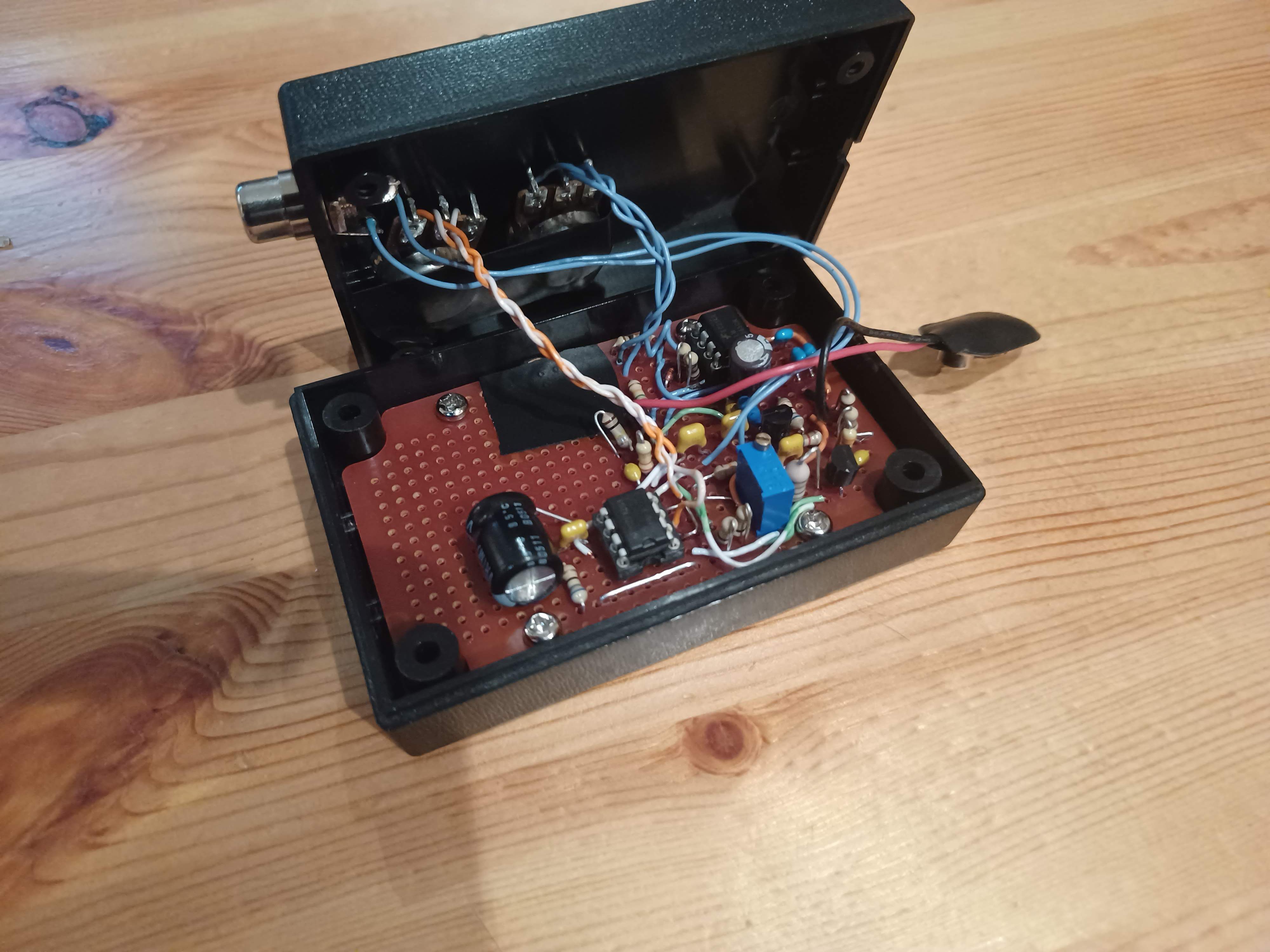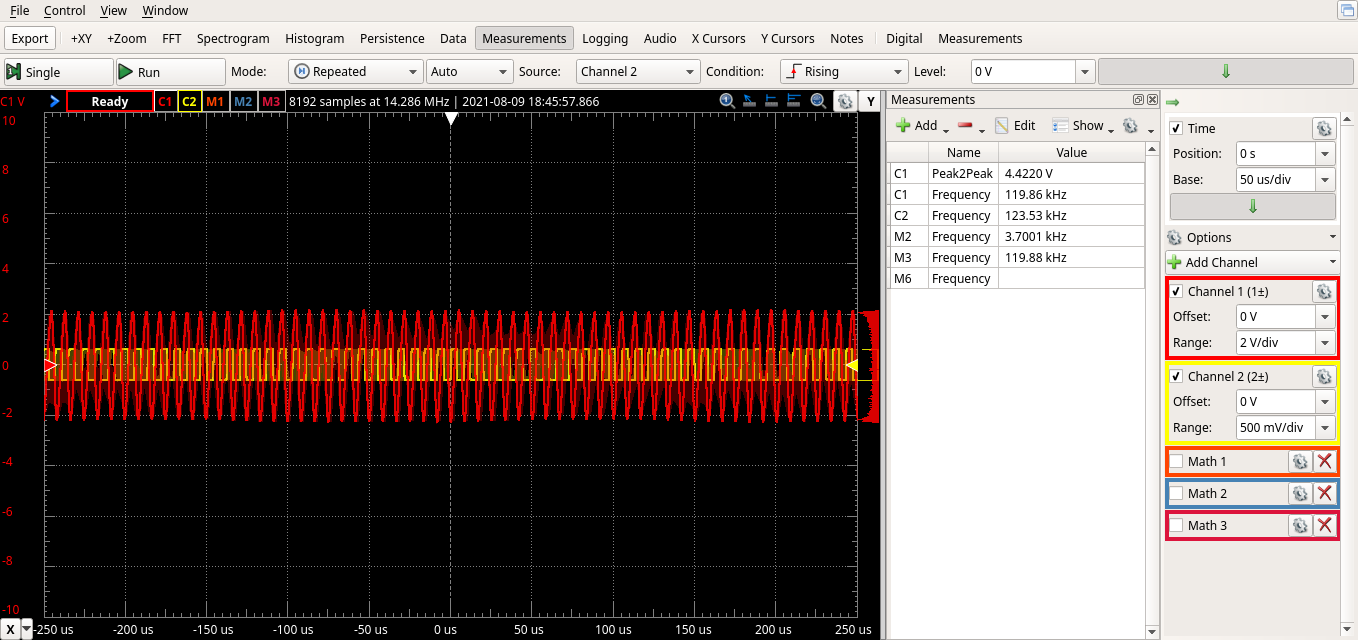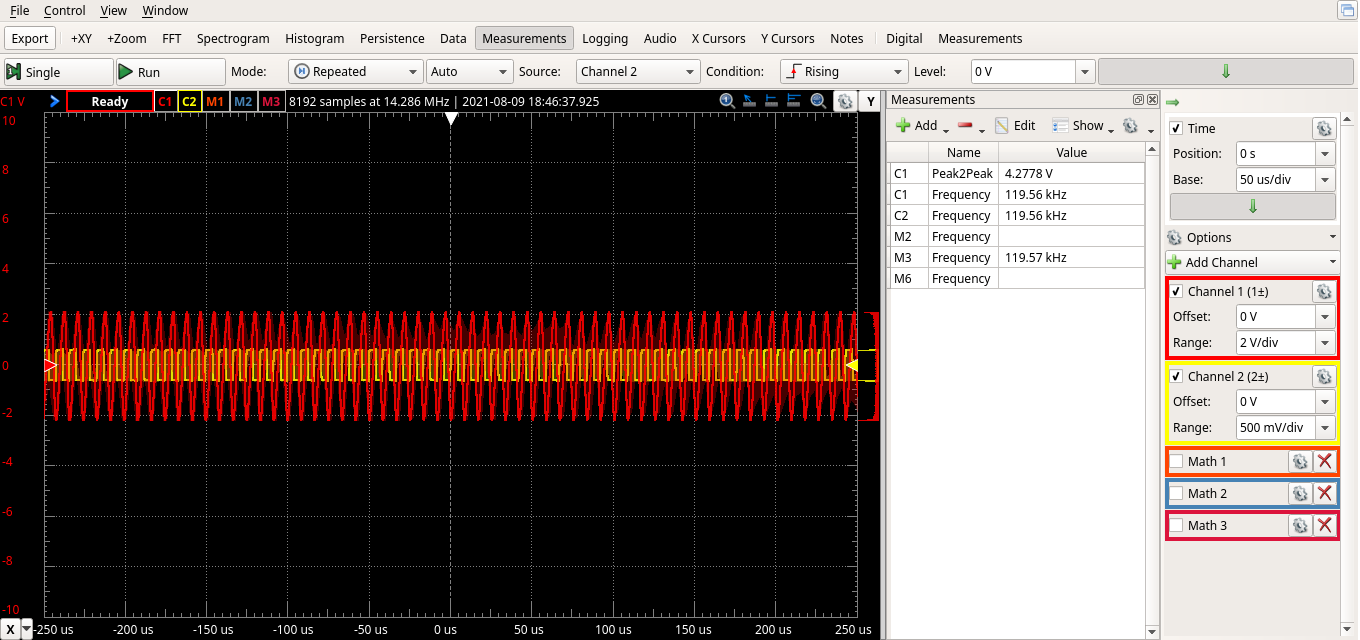There are two major issues with the circuit (and a bunch of minor issues):
- BFO/sense oscillator coupling
- amplifier loading of the mixer
BFO/sense oscillator coupling
ideally the frequency of the BFO and the sense oscillator would be completely independent, however, the two circuits are built close together and share a ground node, and so some amount of coupling is inevitable.



This coupling is mitigated by the decoupling capacitors on the 555 timer's power rails, but as you can see in the fig above, the sense oscillator does still lock onto the BFO when the frequency difference is small. This is a problem since it means that the frequency difference between the BFO and the sense oscillator can't be minimized arbitrarily, and since it's easier to hear an e.g. 10% variation in audio frequency when the tone is low pitch than when its high pitch this effectively means that the operator's ability to discriminate between a hit and a miss is diminished.
Amplifier loading of the mixer
This is pretty dumb, but basically the way that volume control is implemented is by changing the size of a voltage divider that feeds the amp. This changes how the mixer is loaded, which in turn causes the mixer products to shift in frequency by a couple hundred Hz, which effectively means that adjusting the volume also throws the device out of tune. In practice this isn't too annoying to deal with, since it just means that you have to set the volume first, and then tune the device, but it sure is sloppy design work.
 zaphod
zaphod
Discussions
Become a Hackaday.io Member
Create an account to leave a comment. Already have an account? Log In.